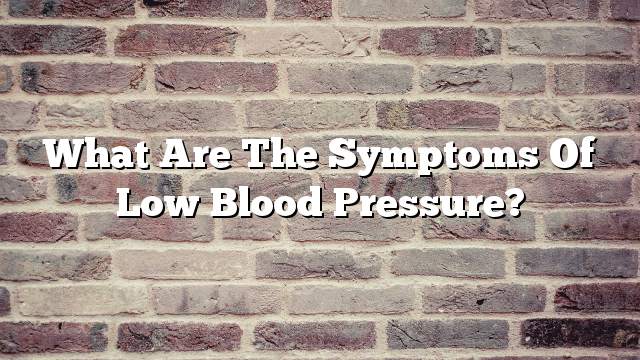Low blood pressure is the condition that afflicts the patient when the blood level in the arteries weaken the pressure on the arterial wall and the measurement becomes less than 80/120 or less than 90/60 depending on some medical opinions, which leads to difficulty in the arrival of oxygen and nutrients to various body organs, The brain, a potentially dangerous condition, may lead to cell death after a period of continuous low blood pressure.
Cases of low blood pressure
- Continuous decrease: In this case, the level of blood pressure is low continuously but steady, in which case the situation is normal and not satisfactory and does not show any symptoms on the patient and does not affect negatively on the body.
- Sudden decrease: A sudden drop in the pressure of the body’s normal rate by more than 20 mmHg, causing real problems. The doctor calls for tests to determine the cause and the patient is admitted to the hospital to raise the pressure level as soon as possible. If a person feels the symptoms of low blood pressure, he should hasten to cure the problem before it gets worse and harms the cells of the body.
- Low standing: a temporary pressure drop resulting from sudden standstill after a period of sitting or lying down. In this case, the person feels dizzy and loses his concentration for moments due to the concentration of blood in the lower limbs and his decrease in the brain. This causes the body to increase the heart beat to compensate for blood deficiency. the brain. This condition sometimes results from satisfactory causes that require treatment. If the patient is suffering from continuous dizziness, he should consult with the doctor to solve the problem. If, on one occasion or twice, the dizziness is simple, the problem is casual and there is no need to worry.
Symptoms of low blood pressure
The most important symptoms of hypotension that appear on the patient in case of sudden drop in pressure are:
- Vertigo and dizziness, dizziness may increase until you reach a complete loss of consciousness and fainting.
- Nausea and a desire to vomit.
- Sudden decline in consideration.
- Pale skin.
- Cooler limbs.
- Speed and difficulty breathing.
- General fatigue and tiredness and relaxation in the body parts and lethargy.
- Change in mood and depression.
- Thirst.
Causes of low blood pressure
- Pregnancy.
- Medicines: such as diuretics and some neurosurgery.
- Drugs and Alcohol.
- Heart disease.
- Thyroid disorders.
- Drought.
- Food shortage.
- bleeding.
The three types of blood loss need attention and attention from the patient, and after knowing the symptoms associated with each case, you should pay attention to yourself well and monitor the symptoms in order to avoid possible complications of the disease.
